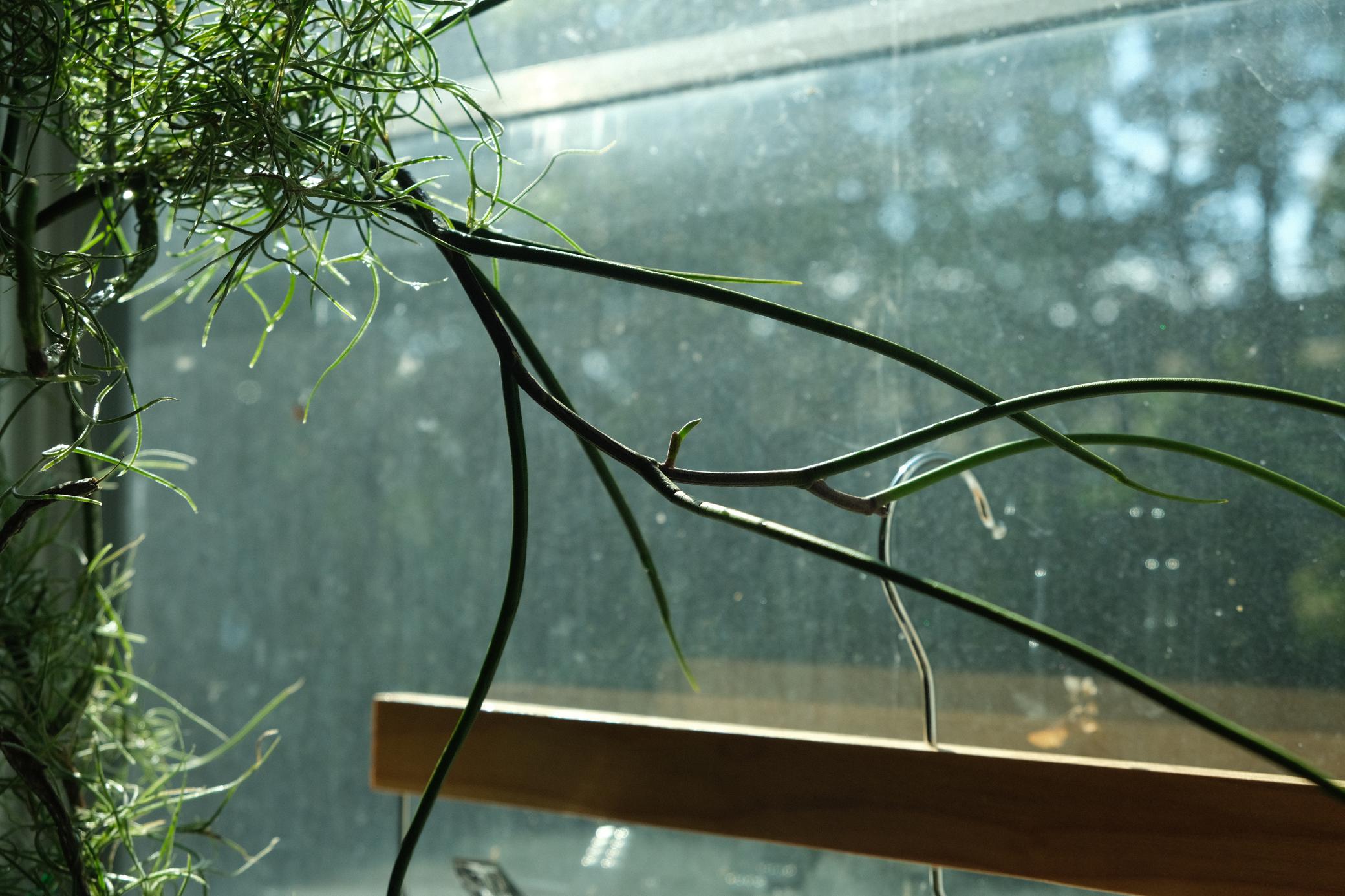Angraecoids
Updated: 9/5/21 at 6:00 PM

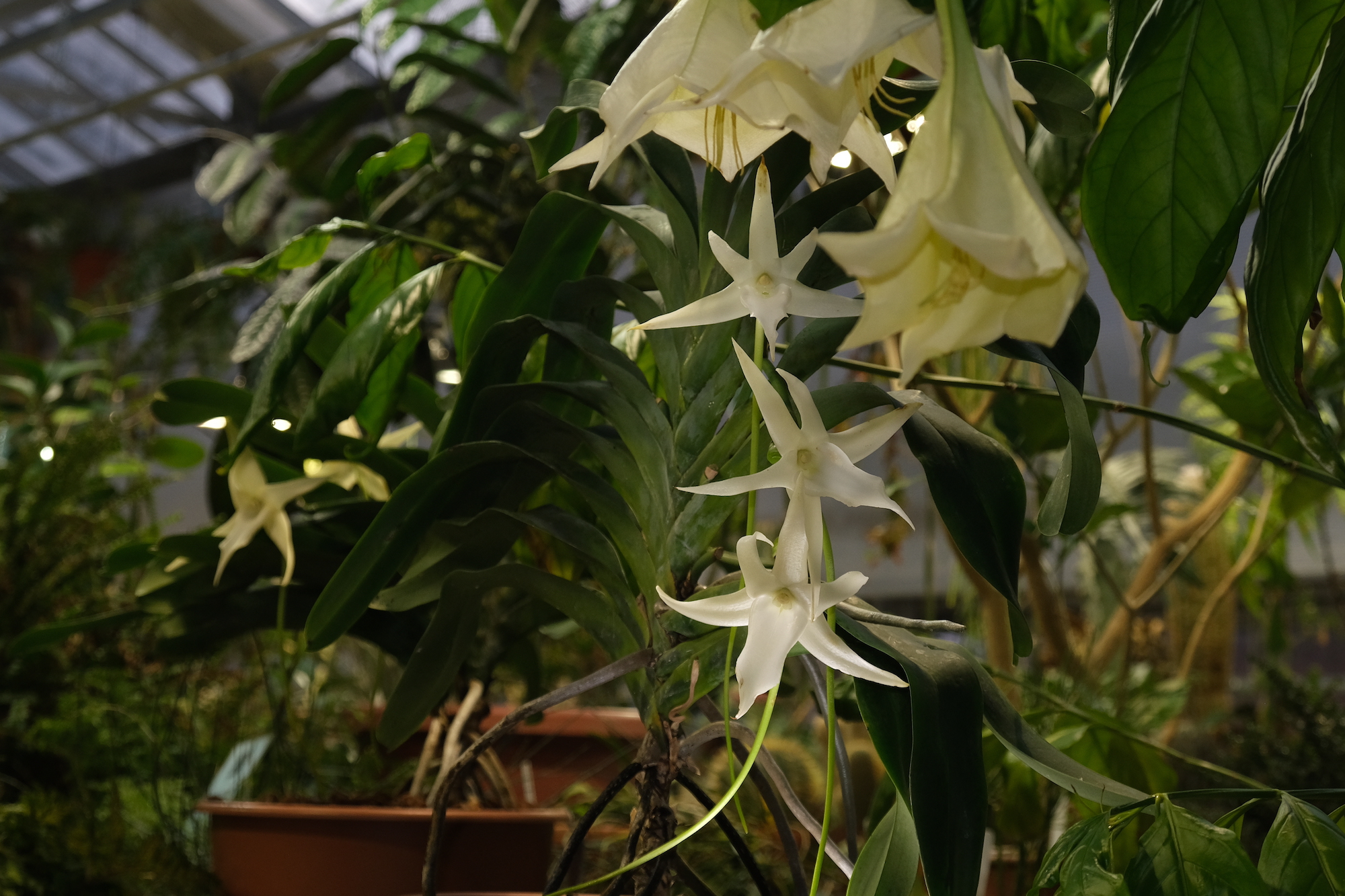
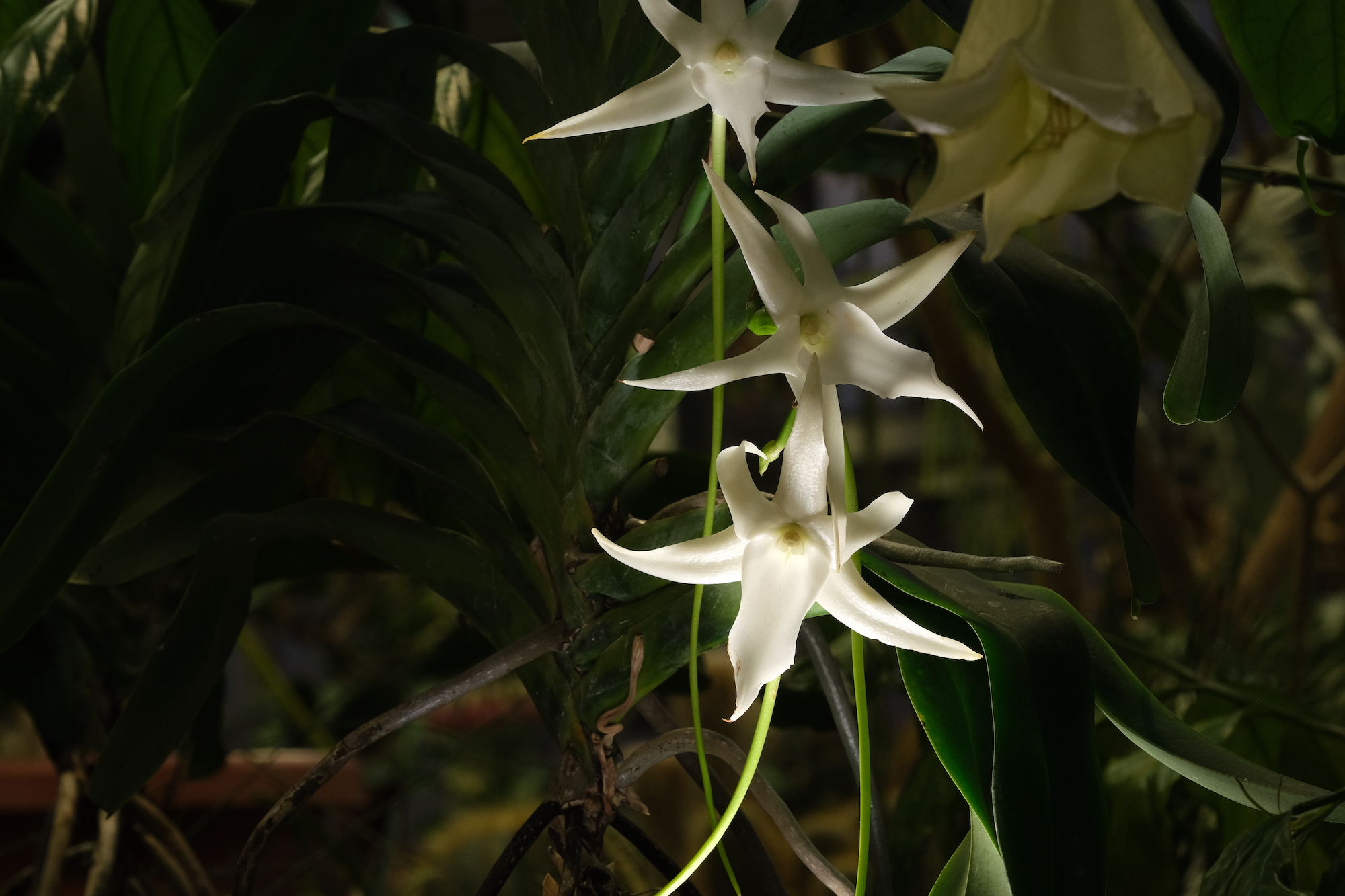
I haven’t bloomed an Angraecoid and I’ve killed two. It took a while for me to take interest because Cornell’s hortorium has many; several large Angraecum sesquipedale and a frequently blooming Angraecum magdalene. When my school has an orchid, I don’t feel like owning it, no matter how beautiful the plant is. But last summer, I got interested in this (largely) Madagascan subtribe, specifically via the listings of J&L Orchids. So I bought an Angraecum germinyanum that’s now in questionable health, an Amesiella monticola which will probably be okay but which hasn’t been growing in a long while. And I had an Aerangis fastuosa that died. The issues may have been a combination of: (1) Too wet and not enough air movement in the terrarium during spring and summer, and (2) Too cold and dry in the winter. I was careless, thinking that putting them in a glass enclosure would be good enough, allowing them sometimes to sit in water with no additional air movement.
I even had a Eurychone rothschildiana from Brookside once; it was part of my first flush of orchid purchases in 2019. It has a lovely dark center surrounded by greenish white petals, but I never saw it bloom. It died quickly of some brown rotted spot, possibly from shipping stress, quite soon after I received it. This was the first orchid that died on my hands. I made the mistake of putting cinnamon on the roots and it dehydrated more quickly as a consequence, though it’s possible that the infection, possibly Erwinia, would have been fatal regardless. It may have been a bit too cool and a bit too dry for it in the fall, which certainly didn’t help. I’ve heard that they will suddenly die for no reason within the first two or three years of cultivation. I don’t want another one because of this, despite its beauty.
This summer, I bought a Cryptopus elatus and Angraecum rutenbergianum from LA Orchid Connection. The Angraecum isn’t doing too well, or maybe it’s okay and just growing very slowly. The Cryptopus is doing pretty well, with fast root growth. And now I want more. From pictures, I can tell that I like the growth habits of many Angraecoids and the angularity of their flowers. This angularity is largely the effect of their long nectar spurs and pointy petals. I like the fact that they’re generally white with a mixture of green; these ‘colorless’ hues are the best on flowers, I think. But angraecoids are often expensive and not available beyond a set of common favorites.
Today I discovered a vendor that specializes in them: Botanica LTD., based in Missoula, Montana, so I am on my way to acquire more. I ended up ordering the following plants (the first isn’t an angraecoid, but the rest are):
- Papilionanthe vandarum ‘Marisa’
- Neobathiea grandidieriana
- Angraecum arachnites
- Angraecum germinyanum
- Erasanthe henrici
Some others I liked that I didn’t get, because they were sold out:
- Angraecum infundibulare
- Angraecum pseudofilicornu
- Plectrelminthus caudatus
- Paraphalaenopsis laycockii
The two Angraecums I got are both of the spidery ladder type, which is to say that there’s a distance between the nodes. The Erasanthe is very rare and expensive and apparently difficult to grow. Botanica cites “watering technique” as the difficulty, but I have my doubts. Species are harder to grow if they’ve been imported within their lifetimes as mature plants; I’ve read that the offspring, bred in captivity do better, because they adapt to the grower’s environment as seedlings. So I’m going to assume that the plants they’ve grown are significantly more adaptable than the ones they originally describe, those imported directly from Madagascar. Here’s a nice handout on the species from the vendor, at this point rather old.
The Neobathiea has a long shape, with angular petals, a dagger-like lip, and some green. It also goes by ‘filicornu.’ I have to say, I’m biased towards buying orchids with “didi” in the species name, even if they come from some French man named “Didier” (my own name is “Didi”).
I’m quite excited about that Papilionanthe. It’s a cool-growing, terete-leaved vanda from the Himalayas. I’m afraid of it getting very large and difficult to enclose. It should fit in the vinyl tent during the winters, but during the summers, would it fit in the cooler? Does it need to fit in the cooler? Probably not.
My ultimate goal would be to pollinate the Ersanthe (and the others!) and send the seeds to someone with a germination setup and then get a flask or compot back, at a reduced price. Maybe Botanica will do this…
It is technically possible to divide monopodials, but it seems risky. You would have to make a cut between nodes and just hope that new roots would sprout from whatever you hacked off. Or, wait for a keiki. I used to dislike monopodial orchids for being monopodial, and thus easier to kill. Now I like the challenge, and the impression made by seeing a monopodial with multiple growths.
An interesting note on Angraecoid culture—some growers use lava rock as mounts, as described in this article. Lava rock is primarily composed of nitrogen, phosphorous, potassium! And various minerals—zinc, iron, copper, magnesium, boron, sulfate, calcium, manganese, sodium. These are only made bioavailable if exposed to acids from the plant (citric, oxalic) and from the water (which must be low in pH). Seems like a medium worth trying out, but I don’t know where I can find a source with the appropriate grades and quantity.
8/27
Received the plants, all in excellent condition. I adore the Spanish moss, too.

9/4

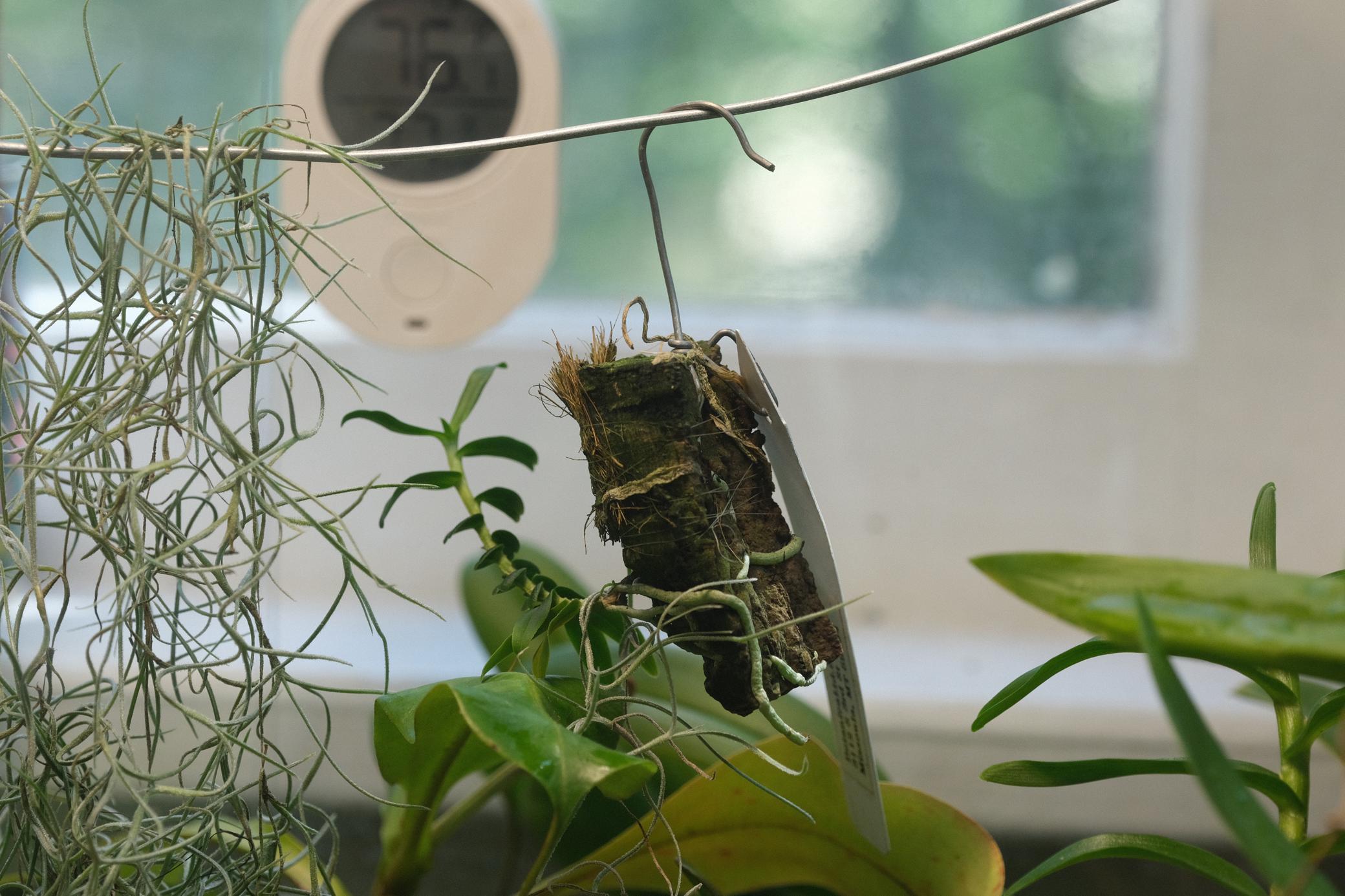

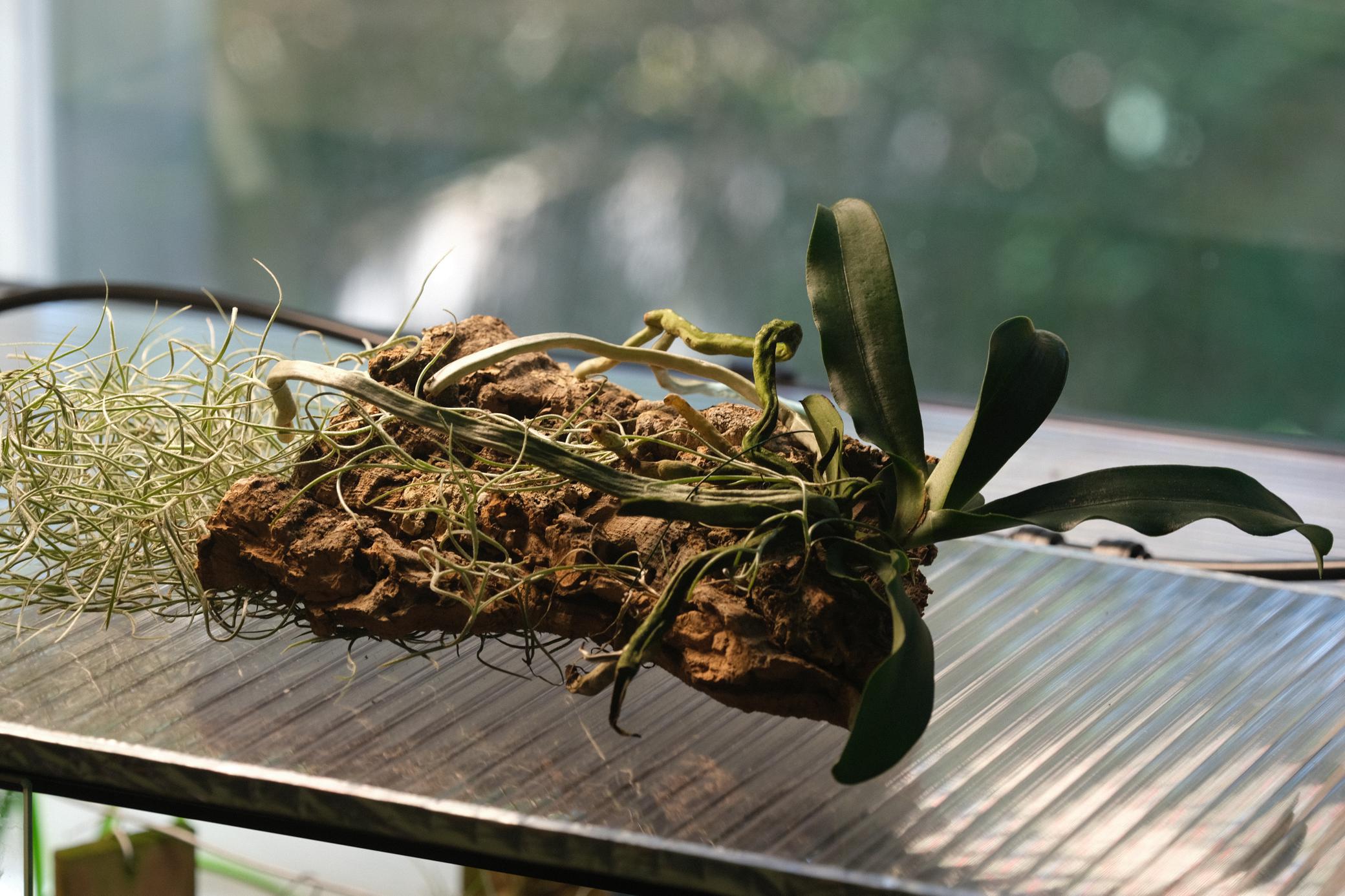
Everything is doing fine and showing some signs of growth. The Erasanthe is almost mannerist in its growth habit. I admire its flat roots, the slight waviness to its leaves. Some of the root tips turned black after being mounted; it does seem to be a sensitive plant. The newest root tip has been growing, though, it has little black spots near the base. The older root tips are oddly shaped, they taper to a small, rounded point, unlike the more bulbous and convex root tips of phalaenopsis and other orchids. It is truly a unique and beautiful plant.
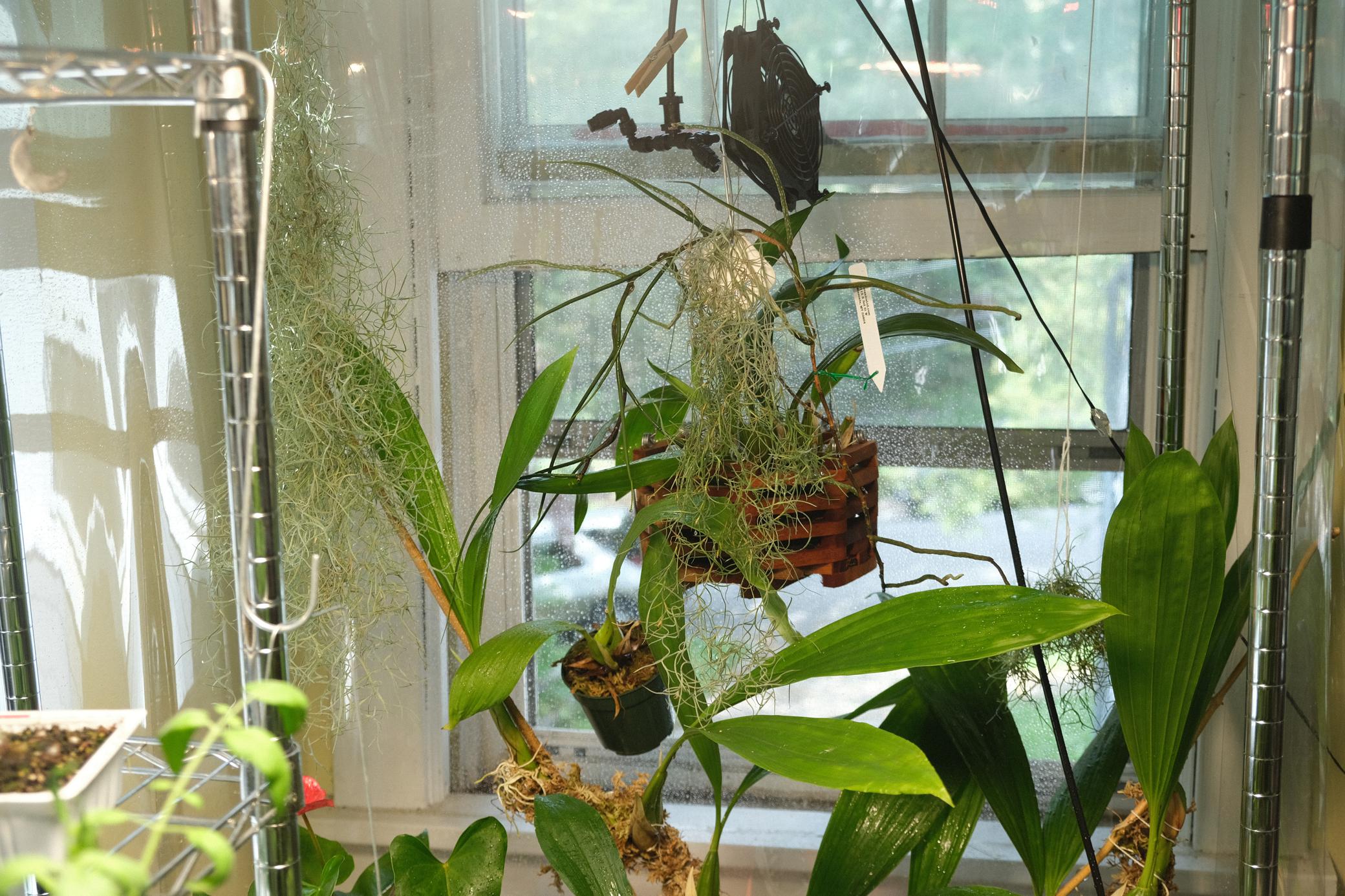
And the vandarum… Who knows what’s going on with it. The terete leaves admit no signs of sunburn or of lack of light, and the roots never seem particularly dehydrated or particularly wet, I’m not sure if I’m giving it enough water or not. This is a tough plant, which won’t express its conditions through the wrinkles of its “face,” but I am experimenting right now with exposing it to more light. I wish I could find it in situ. Here’s an impressive photoset of Papilionanthe teres in Assam; the plant is gigantic in spread.
9/13
I am seeing progress in these new growths. Decided to wrap the roots more thoroughly with Spanish moss. Increased light seems to have spurred on this new growth.
